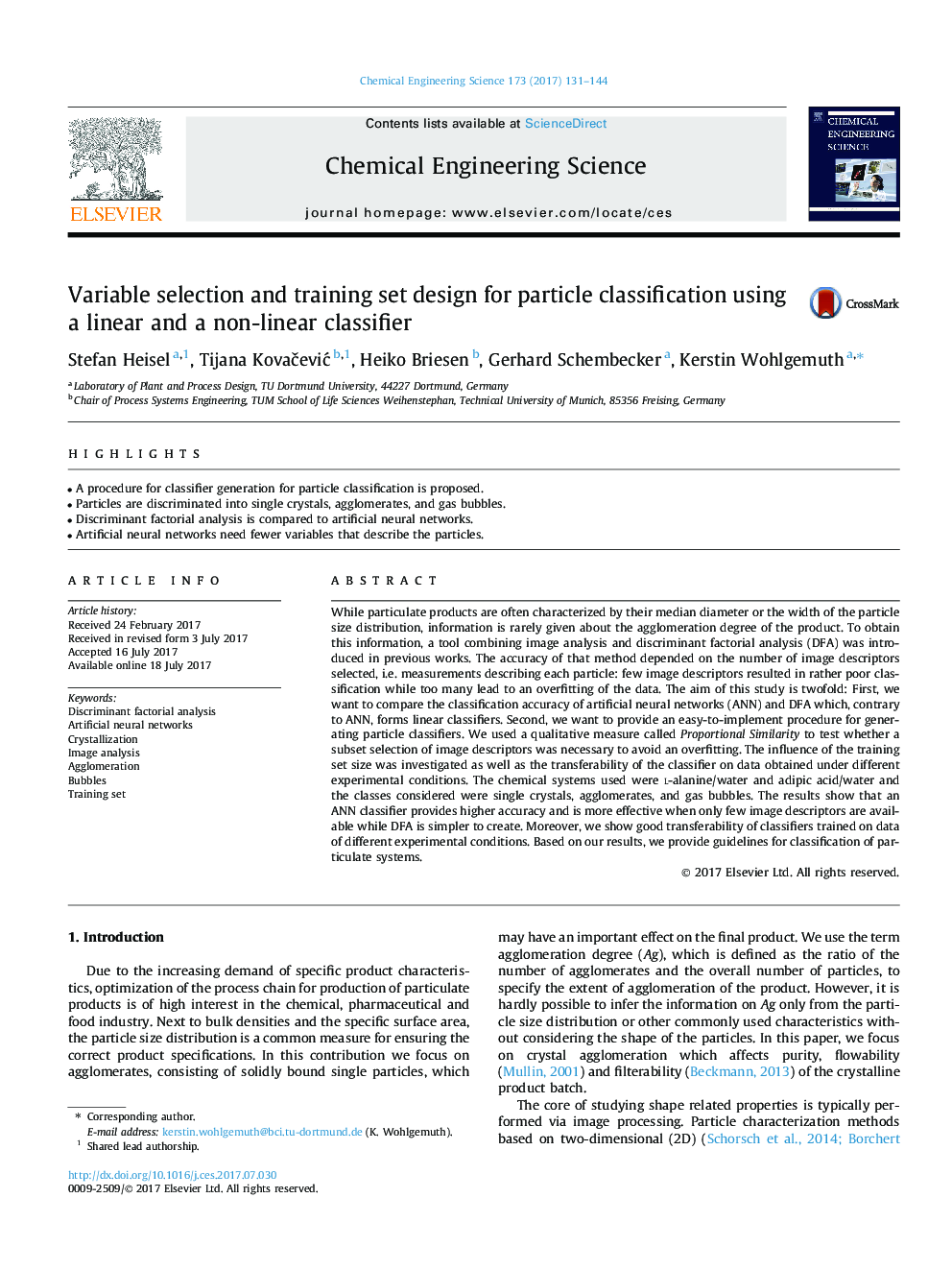| کد مقاله | کد نشریه | سال انتشار | مقاله انگلیسی | نسخه تمام متن |
|---|---|---|---|---|
| 6466780 | 1423246 | 2017 | 14 صفحه PDF | دانلود رایگان |
- A procedure for classifier generation for particle classification is proposed.
- Particles are discriminated into single crystals, agglomerates, and gas bubbles.
- Discriminant factorial analysis is compared to artificial neural networks.
- Artificial neural networks need fewer variables that describe the particles.
While particulate products are often characterized by their median diameter or the width of the particle size distribution, information is rarely given about the agglomeration degree of the product. To obtain this information, a tool combining image analysis and discriminant factorial analysis (DFA) was introduced in previous works. The accuracy of that method depended on the number of image descriptors selected, i.e. measurements describing each particle: few image descriptors resulted in rather poor classification while too many lead to an overfitting of the data. The aim of this study is twofold: First, we want to compare the classification accuracy of artificial neural networks (ANN) and DFA which, contrary to ANN, forms linear classifiers. Second, we want to provide an easy-to-implement procedure for generating particle classifiers. We used a qualitative measure called Proportional Similarity to test whether a subset selection of image descriptors was necessary to avoid an overfitting. The influence of the training set size was investigated as well as the transferability of the classifier on data obtained under different experimental conditions. The chemical systems used were l-alanine/water and adipic acid/water and the classes considered were single crystals, agglomerates, and gas bubbles. The results show that an ANN classifier provides higher accuracy and is more effective when only few image descriptors are available while DFA is simpler to create. Moreover, we show good transferability of classifiers trained on data of different experimental conditions. Based on our results, we provide guidelines for classification of particulate systems.
Journal: Chemical Engineering Science - Volume 173, 14 December 2017, Pages 131-144
